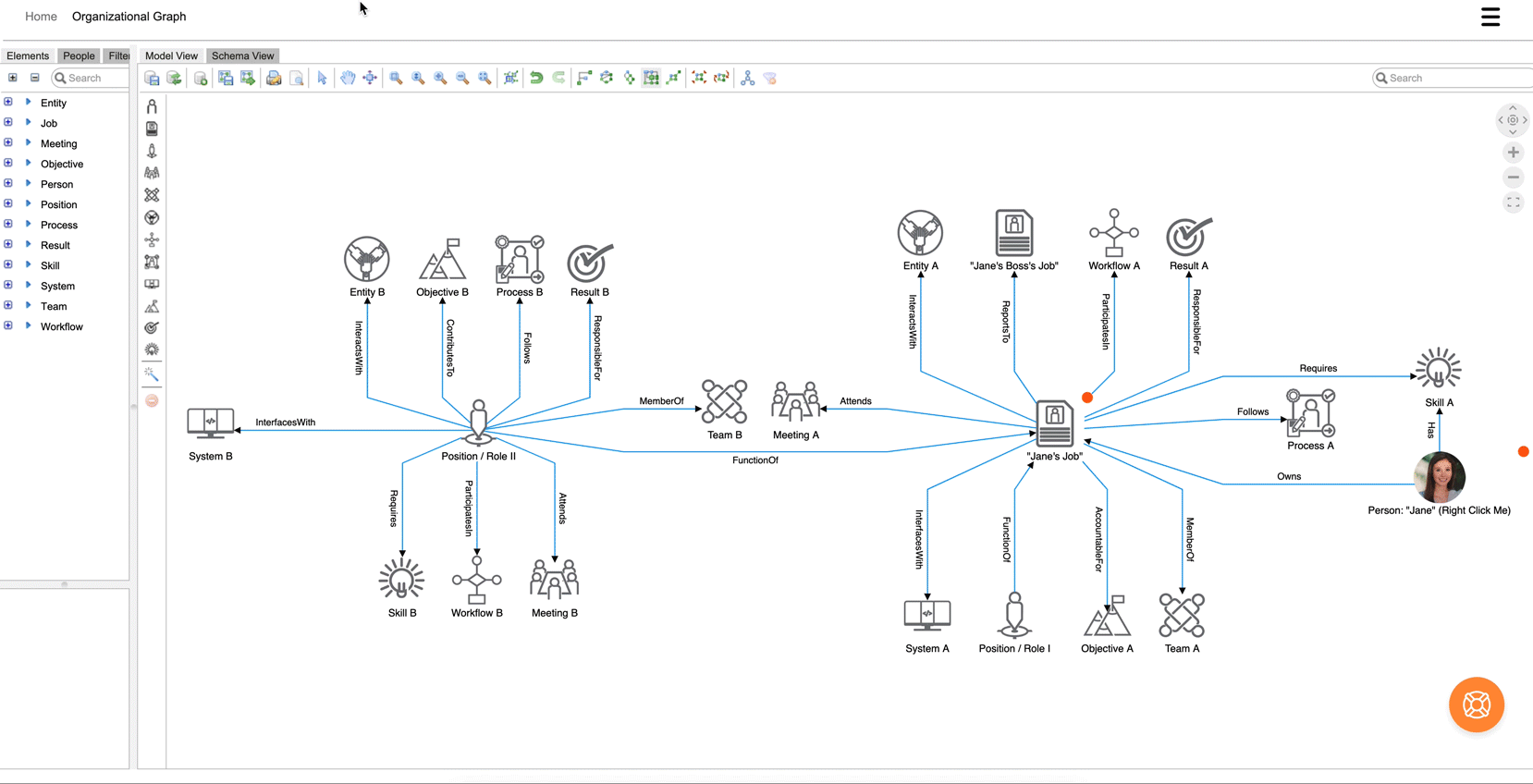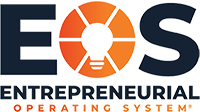Do you feel there is more?
As the third EOS® Implementer,
I help you lift EOS to another level,
I help you make Traction come alive.
I help you reignite your EOS journey.
We can measure your improvements as we march to 10x together.
Below is a quick video describing the ceilings and the opportunity between you and 10x.
Unfortunately, many EOS implementations get stuck, often at the Sr. Leadership Level or in the home office, never making it to the field or into the frontline, never out across the Entire organization where the bottom line action happens.
It is time to double down with Brown.
There is significant opportunity gap that you can fill for improved EOS ROI, if you know how.
Aligning everyone around Traction, top to bottom, is where the magic happens.
Where did you go wrong? You did not empower your employees.
I ask for permission to share my experiance as the third EOS Implementer, across 1,300+ EOS session days and 200+ client implementations with you.
It is Simple. You did not “flip the script”, you were not taught or told how to roll EOS out and when you did try rolling it out, it felt like a steamroller to your employees, not as empowering, and this set up three huge barriers to any future success.
1. You were not able to explain the “why” of EOS that your employees could see, feel, and measure.
You were not able to paint a picture where they saw themselves in a better place because of Traction.
You were not able to tune them into their favorite radio station WIIFM and your were not able to directly answer their question: What’s In It For Me?
2. Because of number 1, your employees saw EOS as being done to them and not for them, and they dug their heels in or folded their arms and adopted the infamous “This too shall pass.” attitude. = Normal.
3. Because of 1 and 2, you were not able to empower your people to use EOS for thier own good. When they see it as something that is for them, they embrace the tools and use the system for their own good, creating well, Traction.
You can reboot.
Sure, you missed the first shot to get it right, you got it wrong and now you feel EOS is “sort of working”, but, you know in your gut that there is another level, that it can be better.
To make EOS® really take hold, you must flip the script and help your people see EOS as something you are doing for them and not to them.
In my latest book ATTRACT OR REPEL I share my simple proven recipe that I am happy to share with anyone, that is why I wrote the book.
To find out more just ping me and I will send you an advance copy or let’s “go verbal” and I will share the secret sauce. walt@waltbrown.co
It is very powerful.
About Walt: I love helping companies master EOS.
Now-a-days it seems my clients are falling into one of two categories.
In Category One are the older Millennial CEOs who wants to go hard and deep, who want to learn and measure the results of what they have learned. And, they want to graduate! No time to waste.
In Category Two are clients I am taking over from another EOSi peer, and this is great news. I imagined a tipping point where we would have so many raving fans of EOS that there would be a sub-set who have spent 3 amazing years with their first EOSi and now both are ready for a change, a different perspective, something new yet the same. Normally these clients interview two or three expert EOSis, and I am winning my fair share. I’m not a fit for everyone.
While every company is unique and requires EOS adjustment and finesse, your organization will not be a learning guinea pig. As the 3rd EOS Implementer trained by Gino Wickman and Don Tinney in 2008, I have had the honor of guiding and graduating over 180+ companies thru their EOS Journey to mastery. That translates into over 1,200 session days with client teams. Mastery means your people can teach it to everyone that follows.
Generally my clients enjoy similar results to what Gallup sees with thier employee engagement results. 10% more customer loyaly, 18% better sales results, 25% less turnover in low turn0ver companies, 51% fewer errors, 61% fewer saftey incidences, 81% less absenteeism, 23% better EBITDA – all measurable.
Clients graduate so I am always looking to add another good one. My local and virtual day rate is $9,500 and a typical EOS installation is around 9 days across two years, [ there are your budget numbers, my pleasure, =:- ) ] My travel rate is based on an algorithm and varies based on hassle.
What do I mean by graduate? It means two things: 1. Your organization has mastered the tools of EOS, mastery means all can teach and hone them throughout the current organization and to anyone entering in the future. 2. You are realizing a measurable ROI on your EOS time and dollar investment. You will see top line gains, your bottom line will be 20% thicker on average, net free cash flow will be measurably stronger, retention and engagement will be solid with much lower turnover in key people, safety incidences will decrease etc. etc. My clients measure their success and work to hit their measures through EOS Mastery.
Since clients graduate, I am always looking for another “good one”.
People say: “Wow Walt, you are so busy, are you full?” I say: “Heck no! as a matter of fact, I will always make room for a good one, and, remember, I graduate clients, so I am always looking.” So, what is a “good one”?
It starts at the top, my initial relationship starts with the CEO or Owner(s). If this person is humble, hungry and smart, if they are never satisfied with the status quo, if they realize it is not all about the how, but, depends deeply on the who. If they are committed to building the finest team they can build and surrounding others with these same team membersmates, then they will be a good fit.
About Walt: Fun Update – Walt has been asked to serve as the Coach of the Expert Implementers – Cool!
Nov 1st, 2022 – In addition to his full-time gig as an Expert EOS Implementer, Walt has accepted the call from EOS Worldwide to serve as Coach to the EOS Expert Implementer Community.
This is a real honor, the Experts have over 500 session days under thier belts and advance the art and brand of EOS® everyday. As of today there are 52 of these folks.
End Update.
About Walt: Uncle Walt is an Organizational Trust, Culture, Engagement and Health Activist.
His purpose, cause and passion is eliminating the restraints of organizational confusion and dysfunction that are holding individual contributors back from being the best they can be. When these bonds are eliminated everyone enjoys more freedom. CEOs, leaders, owners, employees enjoy more money, more time and less stress = freedom.
These restraints are removed by teaching clients how to create and maintain clarity around four disciplines: Strategic Thinking, Organizational Structure, Culture / Engagement and Organizational Operations – all things that should exist inside their operating system, like EOS.
Walt’s clients enjoy permanent improvements in measurable financial results. If there are industry standards, the standard bottom line is often doubled or tripled, standard margins are signficantly improved, cash flow nightmares go away, and lines of credit are rested just to name a few.
* Walt’s clients call him Uncle Walt. One client, John Wilson, explains why: “Well, we all know Walt loves us and cares for us like a loving Uncle and he is fun, we like seeing him most of the time. He will tell us things we don’t want to hear and point out things we don’t want to see, and he will take time to teach us, show us, coach us on how to get better. But, at the end of the day, he is an Uncle not a parent, we do not have to listen to anything he says, and eventually, he will just go home, but, we remember his wisdom because it is gold. We love Uncle Walt”
The good thing is Uncle Walt is a young uncle with fresh ideas formed by tons of experience, so he is not practicing on us or making it up. He came out of school with Accounting and Statistics degrees, did four audit seasons with E&Y, founded his first company in 1986, grew it and 3 others for 20 years, ultimately selling in 2006. After selling he reinvented himself as a strategy coach working with 100s of CEO clients this led to EOS® where he is the third Implementor having gradated over 180 companies from the program across 1,200+ off site retreat days. Recently EOS asked Walt to be the head coach of the Expert Implementers.
All of this experience has led Walt to categorize and capture his coaching into four separate but interdependent disciplines:
- The discipline of Strategic Thinking. Book: Seeing the Invisible.
- The discipline of Culture and Employee Engagement. Book1 on the subject: The Patient Organization. Book2 on the subject: Attract or Repel
- The discipline of Org Structure and Design. Book: Death of the Org Chart.
- The discipline of Organizational Operations. EOS® Gino’s Book: Traction – Get a grip on your business.
These four disciplines can work independently, but, they work best when combined.
The result is Freedom. Freedom for employees, owners, investors. Freedom from the bonds of Money, Time and Stress. It works.
About Walt: Helping companies enjoy the EOS® Life for 14 years.
Walt Brown – Full-time Expert EOS® Implementer since 2008.
More than 200 graduated clients across 1,300 session days.
Walt is the 3rd EOSi trained by Gino and Don.
Client Quote: $170+ Million, >600 Employees
Dear Uncle Walt—
More than a few times we have all said Praise God that we implemented EOS with your 7 Questions, and undertook the single largest project in the history of The Company with our “Transform our Technology” initiative to stand up a whole new ERP system before the global pandemic of 2020.
Thank you so much for your help in getting us prepared to navigate such challenging issues so well with an ever growing competence and confidence in the EOS tools.
Results have been record high gross profits, team member engagement, top box values assessments, and net promoter scores with our customers are all indicators to me of the success that EOS has helped bring to our company.
I truly believe that EOS was the biggest gift we could ever give the company and our team members and our future third generation of family member leaders. For that I’m eternally grateful…
Merry Christmas!
Robert
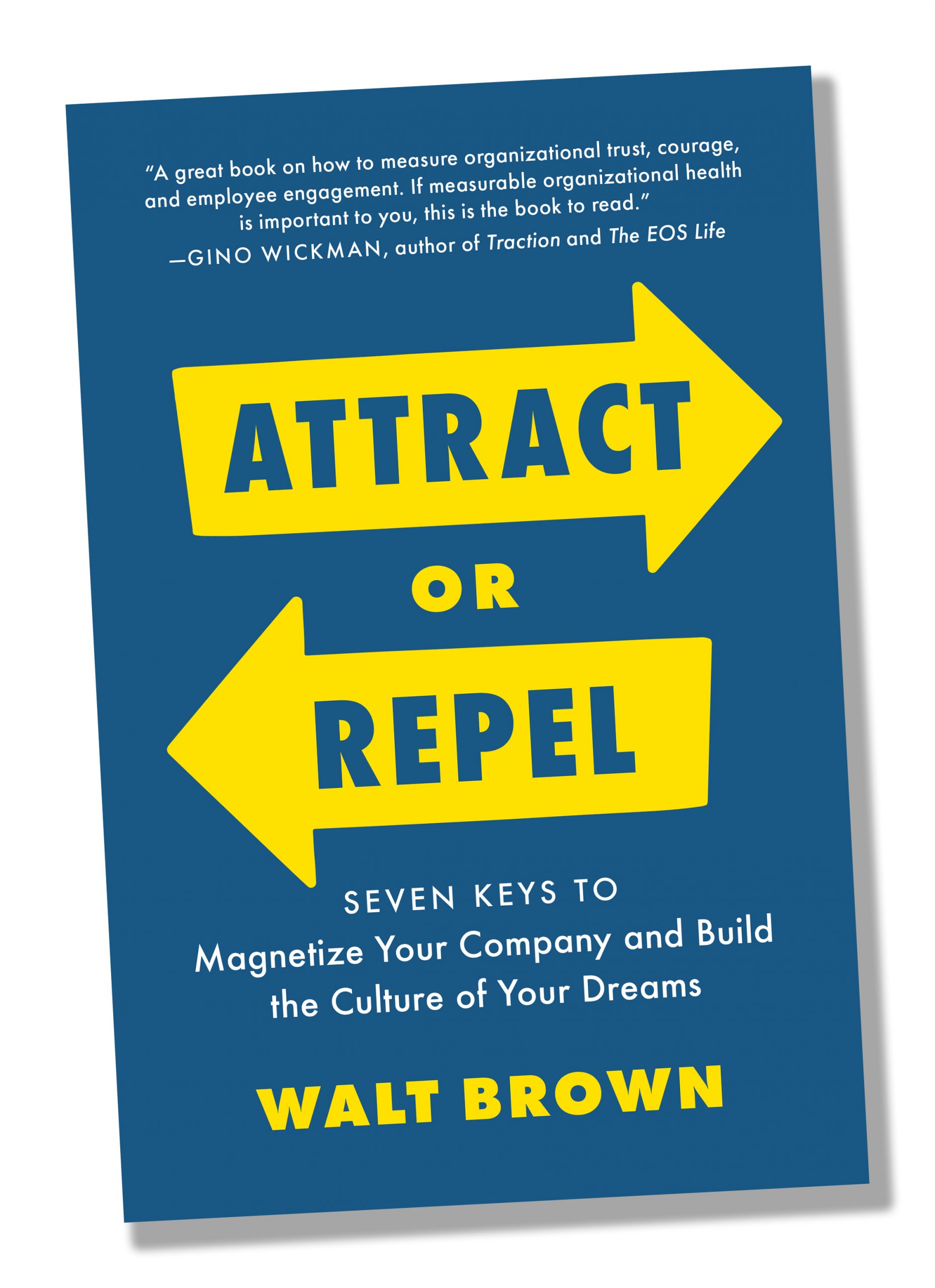
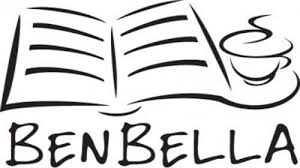
.
Walt’s latest look – ATTRACT or REPEL – Early drafts available. Publishing by BenBella Books – March 2025
“Walt has written a great book on how to measure organizational courage, trust and employee engagement. If this is important to you, then this is THE book to read.
– Gino Wickman – Author of Traction
“When everyone knows how and why we are measuring something, we can work on it, improve it together. Now we have a way to measure trust, courage, and engagement—aka organizational heath—and we can work on it.”
—Alex Freytag, co-author of Profit Works, Expert EOS Implementer®, creator of the EOS Users Conference
Book Summary
As an employee, have you rolled your eyes when completing the latest employee engagement survey and thought to yourself, Well, this is going nowhere, just like the many that came before it.
As an executive, are you in love with one or more of such beautiful organizational health schools of thought as Patrick Lencioni’s Trust Pyramid, Stephen R. Covey’s Speed of Trust, Gallup’s Employee Engagement, Brene’ Brown’s Courageous Leadership, Google and Amy Edmondson’s Psychological Safety? Have you ever thought to yourself, I want this for my organization but how? How do I bring the 20,000-foot theory to the ground? How do I make it real for each individual contributor?
As an employer, are you looking to the future and wondering how you’re going to solve the Millennial/Zillennial engagement problem? How do you approach and engage this workforce generation? How do you stop the millennial peer-pods from leaving? How do you prevent the “quiet quitting” attributed to this generation? What is the message you send and the message you need to send to keep and to attract and retain this important population?
As an owner, have you invested a significant amount of money, senior leadership time, and organizational effort into a popular turn-key “organizational operating system” (OOS) like the Entrepreneurial Operating System® (EOS), Scaling up, Pinnacle, or 4Dx? Are you left wondering, Is this all there is? How do I actually measure the impact of my investment or the effectiveness of our implementation? How do I make it more valuable? How do I keep it alive?”
These are not my questions. These are your questions and they were the same questions my 200 clients were asking while helping me discover and develop the unique BITE7 Framework presented in this book. Whether you’re using a popular turn-key OOS like EOS or have developed your own system, the BITE7 Framework will employ the tools of your OOS and guide you towards building a healthy organization that attracts the right people and repels those who are not the right people. By prioritizing such elements as Buy-in, Inclusion, Trust, and Engagement (BITE), you’ll create an environment where individuals thrive and contribute to the success of your organization.
While my book is written as OOS-agnostic, it has been approved by EOS Worldwide and endorsed by Gino Wickman, the founder of EOS. Moreover, it has its roots in, and the fingerprints of EOS throughout. I don’t know how much you know about the EOS client journey, but the end goal is high levels of team trust, open and honest conversation, and a healthy organization. Clients get to the end of their prescribed journey, feel good, and quickly become students of the organizational health game, often leaning deeply into the works of Patrick Lencioni, Brene’ Brown, Gallup/Clifton, and Google’s Psychological Safety. This is where EOS leaves off and Attract or Repel picks up, going into these schools of thought and relating the concepts back to your OOS. It is a natural progression and, I think, a missing link.
Through insightful guidance, I take you on a transformative journey, helping you navigate the complexities of organizational health dynamics. You’ll gain the tools and knowledge to measure and enhance organizational health, resulting in improved teamwork, effective leadership, empowered individuals, and a more profitable and purpose-driven organization.
One of the big secrets I reveal in the book is how “you flip the script” and make these efforts for your employees, not to them by turning the 7 Questions into 7 Promises. Unfortunately, most employees’ first reaction is to see this sort of effort as being done to them not for them, this is why most of these efforts fail. In Attract or Repel we outline a proven method based on the power of promises to reverse this reaction, turning a negative into a positive. This is a very big, when employees see this as being done for them and not to them, they embrace it, pick up the standard, and as time goes on are the ones who drive it and help you keep your promises. Promises are very powerful things when made and kept.
Attract or Repel is your essential companion on the path to building a healthy and thriving organization that attracts the right people, fosters collaboration, and drives sustainable success. Embrace the power of organizational health and unleash the full potential of your OOS, your teams, your people, and your company.
What makes me uniquely qualified to write this book and share this natural progression and missing link?
I am lucky because I have a “laboratory” of over 200 deep senior leadership team relationships, not only with individual CEOs but with entire C-Suite teams. For the past fourteen years, I have had the honor of spending 140+/- days a year, huddled offsite, with these senior leadership teams doing the gutsy work of working on their business. Together, we discover issues, see consistent patterns, and test solutions. In the lab, the four questions I asked at the beginning of this Book Summary kept surfacing and together we developed and established a proven framework that stopped employees from rolling their eyes at the latest survey, gave executives a path to actualize their favorite school of thought, enabled employers to solve the Zillennial/Millennial riddle for good, and empowered owners with a way to measure how well their organizations were embracing their OOSs to keep them alive and make them more valuable.
That solution is the BITE7™ Framework, composed of one simple Seven Question survey and the BITE Index™ (Buy-in, Inclusion, Trust, Engagement), a planning protocol that uses the existing tools of your OOS and a way to communicate that solves the four questions and makes them go away forever. This book offers the theory and science behind BITE7 and then brings it out of the clouds, to the ground with actionable steps you can take today.
The reason implementations of Organizational Operating Systems (EOS is an OOS) fail out right, or, fail to produce the ROI you hoped for is simple. Your people are seeing the EOS system as something you are doing To them v. For them. When you can flip this script and answer their question “What’s in it for me?”, then you will get the buy-in and ROI you are looking for.
The way you flip the script is to measure and communicate. Attract or Repel describes why and how you do this using 7 Questions.
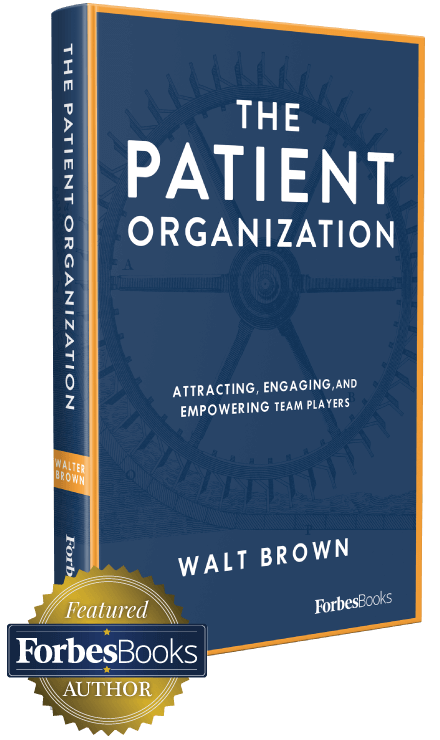
.
The Patient Organization – ForbesBooks – 2019
WHY SYSTEMS LIKE EOS, TRACTION, SCALING UP, ETC. WORK AND FAIL TO WORK.
The reason implementations of Organizational Operating Systems (EOS is an OOS) fail out right, or, fail to produce the ROI you hoped for is simple. Your people are seeing the EOS system as something you are doing To them v. For them. When you can flip this script and answer their question “What’s in it for me?”, then you will get the buy-in and ROI you are looking for.
The way you flip the script is to measure and communicate. The Patient Organization describes why and how you do this using 7 Questions.
Example: Why does the EOS work we do with our clients drive a significant ROI? Two reasons, 1. we measure, and 2. we communicate. We measure EOS’s effectiveness to upgrade your culture, engagement, accountability and retention using the 7 Questions Culture and Engagement Survey as the baseline and foundation of your Why, and, we use the 7 Questions as 7 Promises to communicate clearly: to describe to our folks Why we are doing EOS.
Once our people see that we are doing EOS For them and not To them we get buy-in and are able to create one single organization with a great culture, high engagement, accountability and retention.
Note: I execute very pure* and direct EOS Implementations – I do not add any new tools, or change the EOS Implementation method, we only add a way to measure and communicate via the 7 Questions and 7 Promises I outline in my book.
(* “pure” is a term of art in the EOS community, it is referring to sticking to the script, teaching the tools in the EOS way.)
I am often criticized by my peers because I don’t milk my client engagements for longer periods. I ask: “Why should I!?” If I focus on teaching the material purely and teach the “why” beneath the material, and, don’t become a crutch, then my clients will master the EOS material faster, gain confidence and they will graduate as masters!
More:
The “Why” beneath EOS is captured in my book The Patient Organization, it holds the 7 keys to unlocking the power inside your Organizational Operating System (OOS). Whether it is Rockefeller Habits, Scaling Up, Holocracy, The Advantage, 4DX, Traction, EOS®, or a self-developed system. It will answer why does EOS work? Why does Traction work? Why does Scaling Up work? and how does EOS work? how does Traction work, and how does Scaling Up work etc. etc.?
The Patient Organization and the 7 Questions will make your system come alive for your employees.
I believe my clients deserve a robust ROI from their EOS investment. An ROI that comes from a great culture, engaged employees, robust cash flow and dependable predictable profit. We link our ROI expectations to the statistics from Gallup. Gallup points out that companies who enjoy top quartile engagement and culture enjoy 21% more profit, 20% fast growth, 10% better customer loyalty, 56% fewer safety incidents. These are they baselines we are pushing for in the EOS Implementations we do together.
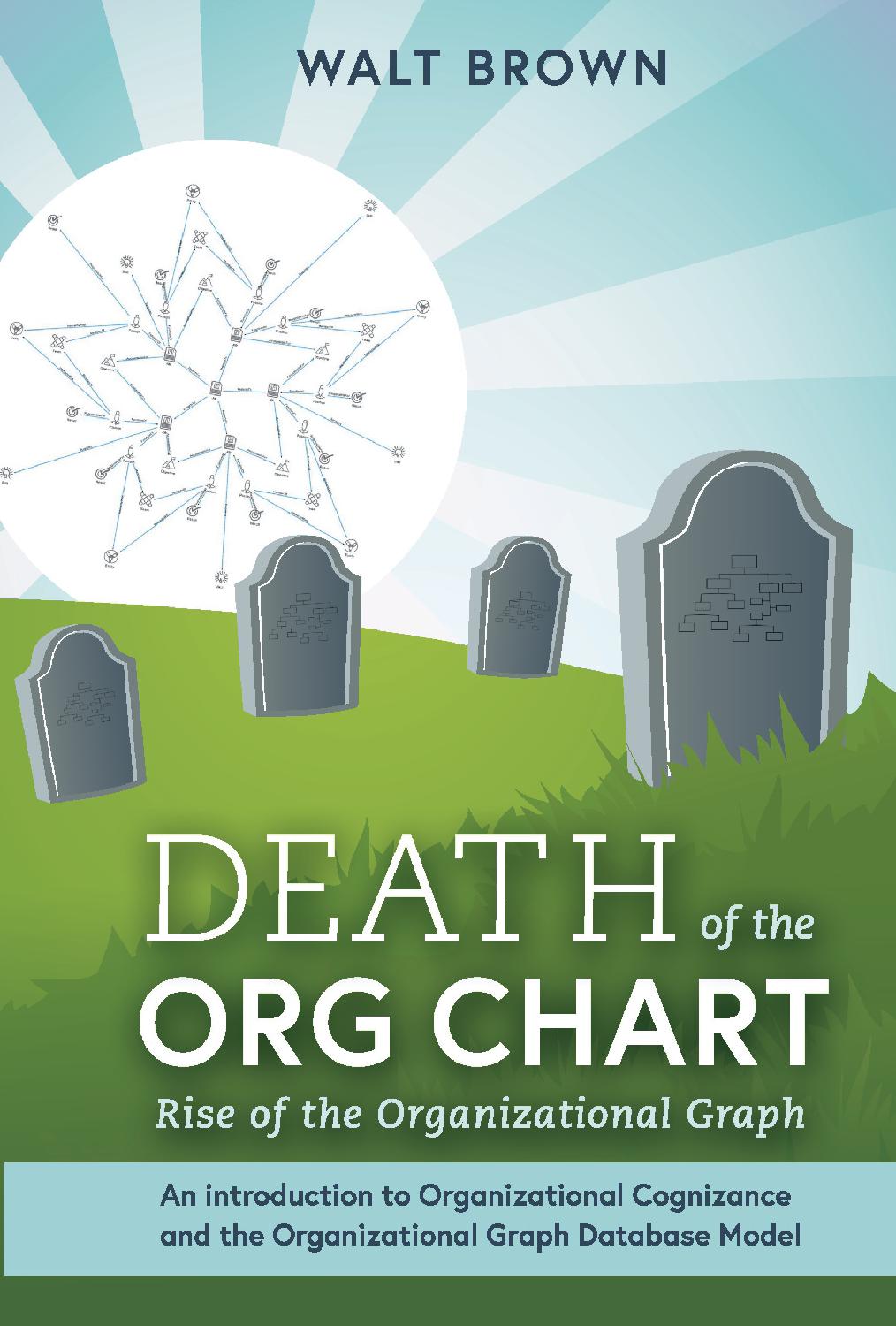
.
Death of the Org Chart, Rise of the Organizational Graph. Self published 2020
ORGANIZATIONAL COMPLEXITY HAS OUTGROWN GRANDADDY’S ORG CHART
My clients and I wrote this book based on 200+ organizational structure and redesign engagements where the goal was to determine and record exactly who is doing what and why. Org charts can no longer capture the complexity inherent in modern tech-enabled organizations.
What we discovered was current approaches were not up to the task of capturing the complexities in modern day organizations – so – along with client input, we created a modern day approach called the Organizational Cognizance Model™ and the 14 Point Checklist™.
Death outlines the model and shares detailed facilitations and how-to you can use in your company to remove organizational confusion and dysfunction.
I run a company that trains and certifies coaches to teach the Organizational Cognizance model that is described in the book.
I am also a practicing OCOG Coach myself, honing the approach in the real world every day.
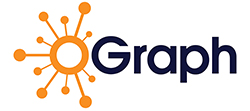
.
Co-founder of OGraph.io Software
State of the Art Org Charting & Org Graphing Software
Creator of the Organizational Cognizance® Model and Organizational Cognizance University
This is the future of organizational Structure and Design
The fact is modern day organizations are more complex than the old organizational design and structure models can handle. It was time to create a new perspective, time to create a model that is flexible, relevant and real.
THE ORGANIZATIONAL COGNIZANCE® MODEL VISUALIZED WITH OGRAPH
I am dedicated to the employee who suffers under the yoke of organizational confusion and dysfunction. To smash this confusion and dysfunction, we developed the Organizational Cognizance Model (OCog) and the 14 Point Checklist. OGraph organizational chart software is anchored in the OCog Model. OCog is the result of 12 years of focus, and more than 15,000 hours helping 100s of organizations eliminate confusion and dysfunction by insuring everyone can answer the root questions: Who is doing what, why, and what am I doing, and why?
